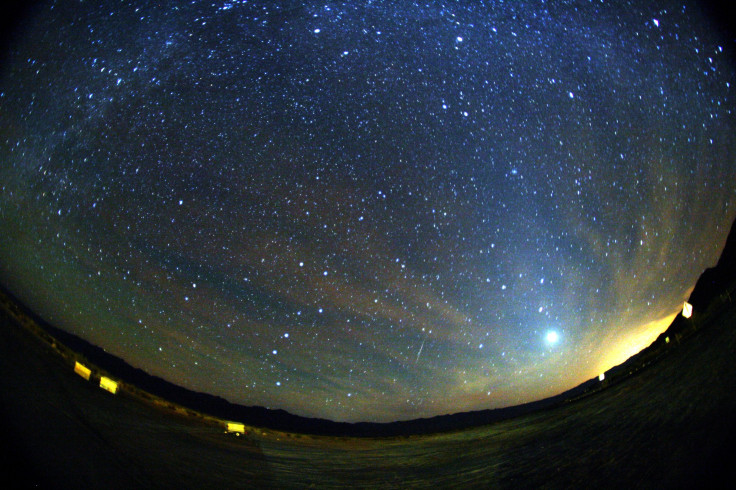Orionids Live Stream: Watch The Orionid Meteor Shower Peak Here

The Orionid meteor shower peaks this week, and it will be easy to observe the meteors from Halley's Comet in person or from the comfort of one's home. Slooh will provide an Orionid live stream beginning at 8 p.m. EDT Tuesday that will track the shooting stars from two different locations.
"The Orionids are usually the year’s third-richest meteor shower. Not to mention that they zoom away from one of the best-known and easily recognized constellations. But this year they’re particularly conspicuous because, unlike the August Perseids that unfolded under a full moon, and the December Geminids, which will also be diminished by moonlight during half the night, the moon will be totally absent for the 2014 Orionids. It should be quite a nice show," Bob Berman of Slooh said in a statement.
The Orionids get their name as the meteoroids appear to originate from the constellation Orion. Their point of origin makes it easy to look for meteors during its peak. Skywatchers in the Northern Hemisphere should look east to find Orion; the three stars that make up the hunter's belt are an easy reference point, as is the Dog Star Sirius, the brightest star in the night sky.
As EarthSky notes, pre-dawn Tuesday was the Orionids peak, but there will still be plenty of meteors streaking across the night sky. The moon will produce little ambient light, providing a dark backdrop for the shooting stars. For the best viewing of the Orionids, one needs to get away from bright, ambient light with an unobstructed view of the night sky. "Meteor showers are debris shed from comets, but the Orionids are special. They derive from the very first periodic comet discovered, the famous Comet Halley. This material collides head-on with Earth to produce extremely fast 'shooting stars,' said Berman.
The Orionid live stream can be viewed below.
© Copyright IBTimes 2024. All rights reserved.






















